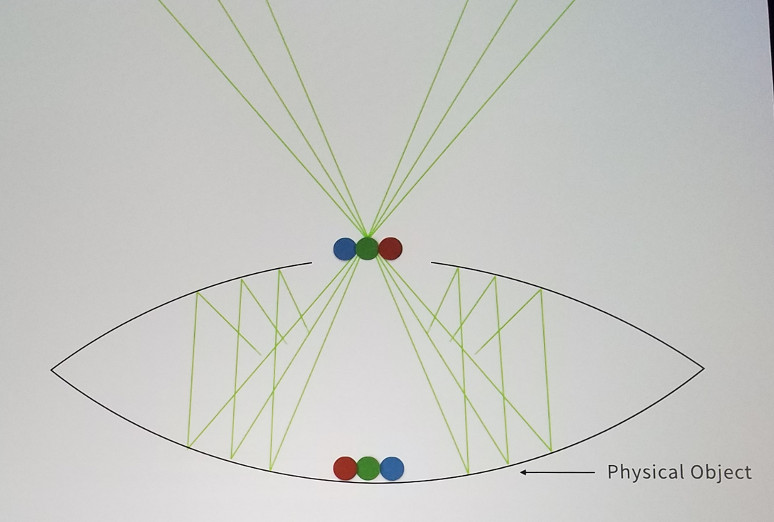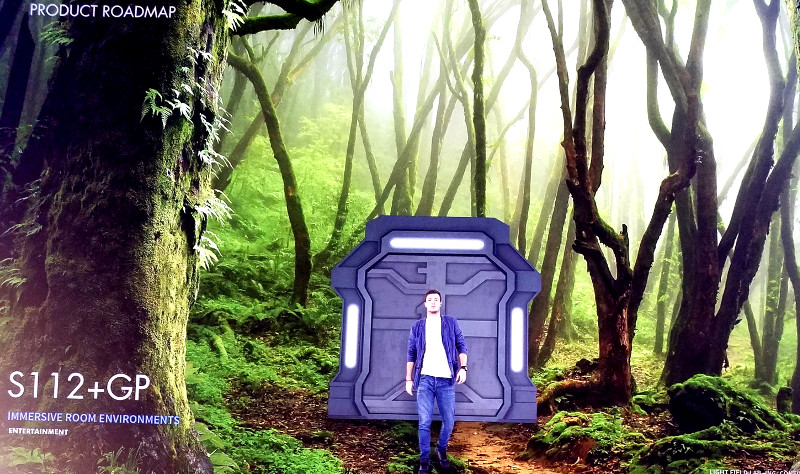John Karafin from Light Field Labs gave a similar presentation to these we have seen and reported on previously. It highlighted some examples of three classes of displays: volumetric; holographic and fauxlographic (display architectures that report to be holographic or light field-based, but are really not, like Peppers Ghost). Volumetric displays create light points in a physical volume of space (laser ionization, spinning LEDs and even flying LED drones, plus displays that create multiple 2D planes of images). Full parallax holographic display exist too, for example, those from FoVI 3D, Ostendo and the Tensor display from MIT Media Labs.
Karafin then gave a little more detail on the architecture of their display, but provided no details beyond this high level description. It is a flat panel-display based solution with two key layers: a holographic encoded projection waveguide and a nanoparticle energy surface.
He said the principle of operation is much like the toy called a “mirascope.” This is a set of mirrors that collect light from a real object and reimage it in a second space. These are real converging light rays. It is very similar to the dual-paraboloid mirror sets used by Wavien in illumination and imaging applications as well. What Light Field Labs appears to have done is reduce this functionality to these two layers with the ability to create any image, not just physical objects.


The first mass production product will be the R150MP. The first pre-production units are planned for availability in 1H’18. It is a 6” x 4” 15cm x 10cm module with the equivalent of about 16K x 10K resolution. Next on the roadmap is the S28GP module targeted at large format location based entertainment and next generation cinema. The S112+GP model extends the concept to additional side eventually culminating in a six-side cube or holodeck.

How far away is the holographic cinema? Five to ten years, think Karafin. – CC

